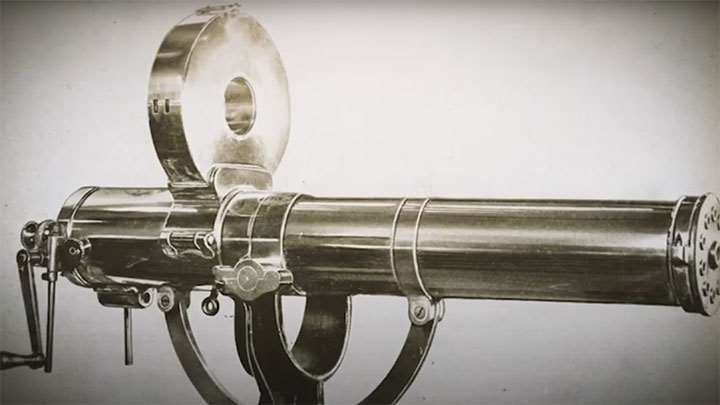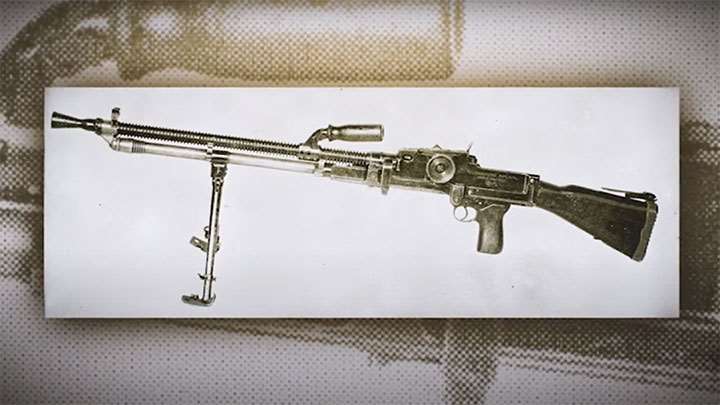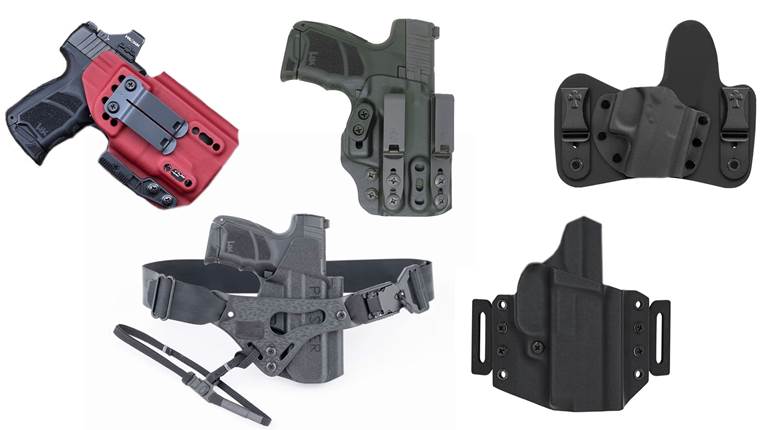
Continuing with American Rifleman picks for the top 10 machine guns of all time, at No. 6 is the manually operated Gatling gun. Designed in 1861 by Richard Jordan Gatling, the design used multiple rotating bolts and barrels to chamber, fire and eject cartridges as they spun around. The original Gatling guns did not mechanically operate themselves, and required an operator to turn a hand crank in order to fire and cycle.
Despite not fitting the modern definition of a machine gun by operating the action itself without user manipulation, the Gatling gun is an important milestone in the development of machine guns and demonstrated the capability that such weapons with high volumes of fire could have on a battlefield. The Gatling design lives on today, paired with an electric motor generating higher rates of fire than all other machine guns, with models ranging from the 7.62x51 mm NATO Dillon M134 Minigun to the 30 mm GAU-8 Avenger rotary cannon used in the A-10 Thunderbolt II.

At No. 5 is a Czechoslovakian light machine gun design that would replace the Lewis light machine gun in British service, the ZB-26 or Bren gun. After World War I, the British sought a light machine gun design that was lighter and more reliable than the Lewis gun, and turned to the product of the Czechoslovakian Brno factory. After the establishment of the arms factory at Zbrojovka Brno in Czechoslovakia in 1923, designer Vaclav Holek was charged with designing a new light machine gun.
Holek's design incorporated the use of a top-mounted detachable box magazine and quick-detachable barrel in a gas-operated, open-bolt light machine gun. The design was so successful that it was ordered by 24 European, South American and Asian countries in the late 1920s to 1930s. In 1935, the British adopted their own variation of the design with a 30-round magazine and chambered in .303 British, which became the Bren gun. The Bren would be used by the British widely in World War II and would continue to see service until 1992.

CrossBreed Holsters is well-known for its hybrid holsters constructed of both Kydex and leather, and one of its newest offerings is the Chest Rig Holster. While this new holster is a bit big for concealed-carry use, it allows users to comfortably carry large-frame handguns easier than other holsters on the market. The Chest Rig Holster attaches via straps on the front of the user's chest, hence the name.

Due to the effectiveness of accurate rifle fire experienced while fighting the rebelling colonists during the American Revolution, the British sought their own flintlock rifle for military use. As a result, they adopted the Pattern 1800 Infantry Rifle, also known as the Baker rifle, as the first standard-issue rifle in service in the British Army. The Baker was muzzle-loaded, flintlock-primed and had a shorter overall length than the standard Long Land Pattern Brown Bess muskets used by the British. The Baker rifle was used in large numbers by British rifle regiments during the Napoleonic Wars.
To watch complete segments of past episodes of American Rifleman TV, go to americanrifleman.org/artv. For all-new episodes of ARTV, tune in Wednesday nights to Outdoor Channel 8:30 p.m. and 11:30 p.m. EST.
























